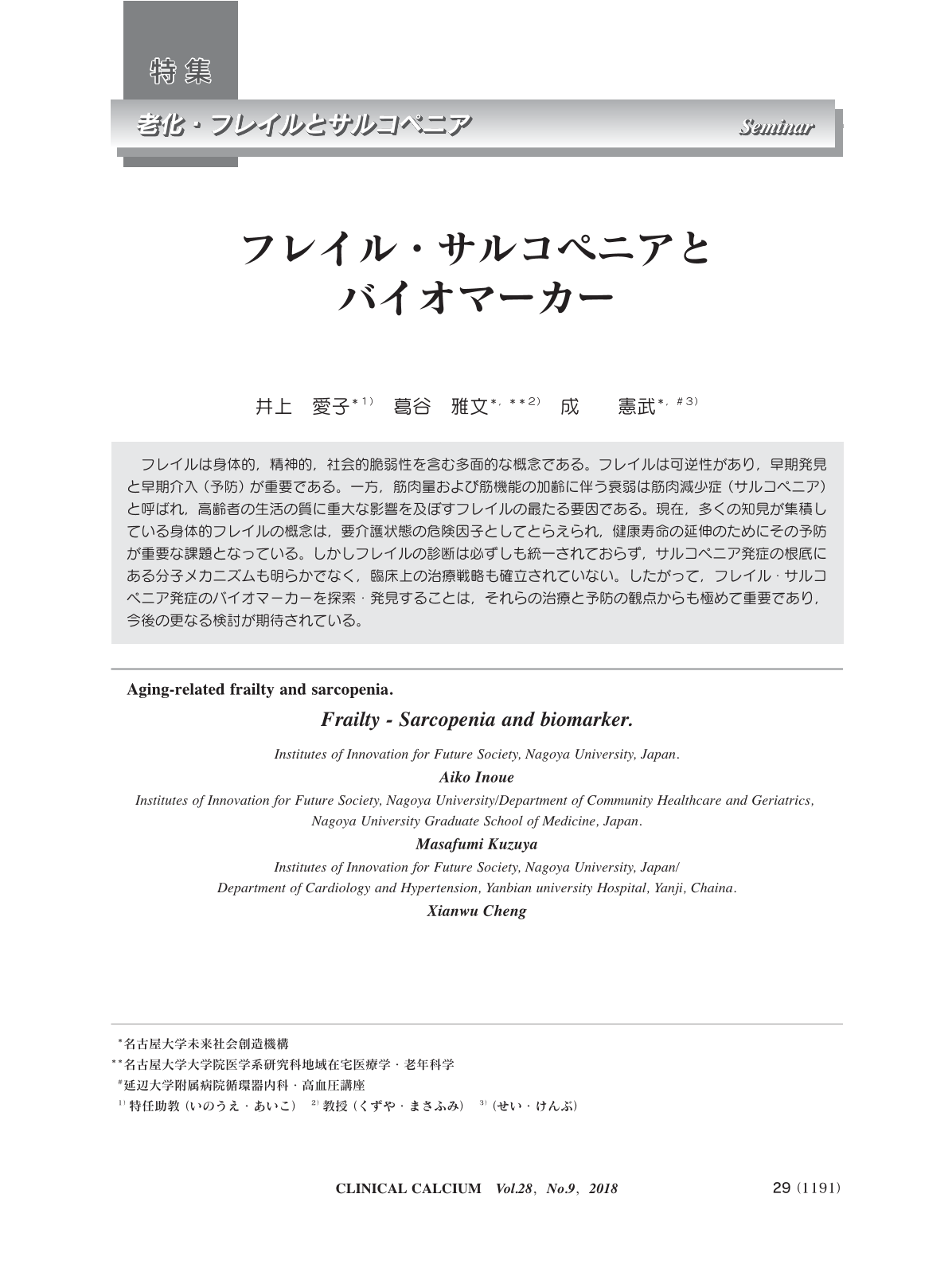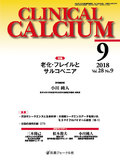Japanese
English
- 有料閲覧
- Abstract 文献概要
- 1ページ目 Look Inside
- 参考文献 Reference
フレイルは身体的,精神的,社会的脆弱性を含む多面的な概念である。フレイルは可逆性があり,早期発見と早期介入(予防)が重要である。一方,筋肉量および筋機能の加齢に伴う衰弱は筋肉減少症(サルコペニア)と呼ばれ,高齢者の生活の質に重大な影響を及ぼすフレイルの最たる要因である。現在,多くの知見が集積している身体的フレイルの概念は,要介護状態の危険因子としてとらえられ,健康寿命の延伸のためにその予防が重要な課題となっている。しかしフレイルの診断は必ずしも統一されておらず,サルコペニア発症の根底にある分子メカニズムも明らかでなく,臨床上の治療戦略も確立されていない。したがって,フレイル・サルコペニア発症のバイオマーカーを探索・発見することは,それらの治療と予防の観点からも極めて重要であり,今後の更なる検討が期待されている。
Frailty is an aging-related medical syndrome which contains the decline in physiological, cognitive, and social reserves abilities. It has been known to be important to early identify and prevent reversible frailty. On the other hand, sarcopenia, the aging-related loss of muscle mass and strength or function is major determinant of the quality of life of elderly and frailty. Recently, the accumulating evidence of the physical frailty concept suggested that it is as a risk factor for the long-term care, leading to be important to extend the healthy lifespan. However, the diagnosis of frailty is not necessarily unified, the molecular mechanism underlying the onset of sarcopenia is not clear, and clinical treatment strategy has not been established. Therefore, the searching and identifying of the biomarkers of the frailty and sarcopenia is very important for the prevention as well as the treatment of the muscle disease, and the further studies will be needed to investigate these issues.



